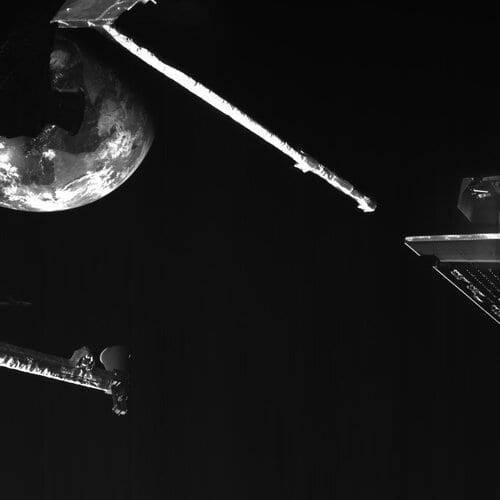Image: BepiColombo’s close-up of Earth during flyby To source


Image: BepiColombo’s close-up of Earth during flyby To source

Image: BepiColombo closing in on Earth ahead of flyby – full sequence To source

Image: BepiColombo closing in on Earth ahead of flyby To source

Information for all visitors to ESA sites Coronavirus measures for hosted meetings and visitors To source

Where is Bepi? Explore the journey of ESA’s Mercury mission To source

Join us for a live streamed conversation with BepiColombo experts following Friday morning’s Earth flyby. To source

Video: 00:02:55 With a simple Google Cardboard-style virtual reality (VR) viewer, you can experience how it feels to be a spacecraft hurtling past Earth. This 360-degree VR simulation of a flyby manoeuvre performed by ESA’s Mercury-bound BepiColombo spacecraft takes you on a trip past Earth at the distance of only 12 700 km, closer than […]

Mercury is a desert world which scientists until recently considered quite uninteresting. NASA’s Mariner and MESSENGER missions, however, revealed that there is much more to the smallest and innermost planet of the Solar System than meets the eye. Despite temperatures on its surface rising up to 450°C, there seems to be water ice on Mercury. […]

Astronomers have assumed for decades that the Universe is expanding at the same rate in all directions. A new study based on data from ESA’s XMM-Newton, NASA’s Chandra and the German-led ROSAT X-ray observatories suggests this key premise of cosmology might be wrong. To source

Today marks 10 years since a Dnepr rocket blasted off from an underground silo in the remote desert steppe of Kazakhstan, launching one of ESA’s most remarkable Earth-observing satellites into orbit. Tucked safely within the rocket fairing, CryoSat had a tough job ahead: to measure variations in the height of Earth’s ice and reveal how […]

Image: Bepi before space To source

Image: Bartolomeo connected to Columbus To source

Scientists using data from the Copernicus Sentinel-5P satellite have noticed a strong reduction of ozone concentrations over the Arctic. Unusual atmospheric conditions, including freezing temperatures in the stratosphere, have led ozone levels to plummet – causing a ‘mini-hole’ in the ozone layer. To source